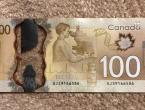Plotio
Finance
【Evening Session】 The basic logic remains unchanged, and it is too early to say that gold has peaked

Gold:
Near the end of last week, gold experienced a sharp drop of over a hundred dollars. This was more likely the result of a convergence of fundamental and sentiment factors. The possibility of China and the US negotiating on tariffs has led to a decline in market tension, causing short-term selling. However, the logic supporting the rise of gold remains unchanged.
Currently, both the internal and external circulation of the US dollar are facing crises. The US tariff policy and the repatriation of manufacturing have blocked the outward flow of the US dollar. The unimpeded export of Russian crude oil and the settlement of Australian iron ore in currencies other than the US dollar have also created gaps in the petrodollar circulation system.
The US relies on high-tech exports to achieve the return of the US dollar, but its technological edge is shrinking. At the same time, the US financial market is becoming more and more bubble-like and risky, reducing its appeal to international capital. Coupled with the impact of tariffs and government shutdowns on the economy, capital is likely to flow out of the US.
Peng Cheng, a market strategist at Zhisheng Research(exclusively invited by Plotio), believes that until the US dollar crisis is resolved, market risk aversion sentiment will remain high. Holding gold is to hedge against future risks. Therefore, the logic of the gold bull market remains intact, and the decline in gold prices is likely to be a short-term behavior.
Technical analysis: The daily chart of gold closed with a shooting star pattern at a high level, indicating a high possibility of a short-term peak. The 1-hour chart has formed a double top break, and it is highly likely that a short-term descending ABC pattern will form. Within the day, one can pay attention to the resistance at around $4,281.
Crude Oil:
Last week, international oil prices continued to hit new lows recently. At present, there is still some room for decline. In particular, the uncertainty of the international trade situation will suppress the rebound of oil prices. Even if the Federal Reserve cuts interest rates to provide liquidity to the market, it is difficult to change the fundamentals of crude oil.
From a macro perspective, the trade war has already impacted the global economic growth rate. The latest "World Economic Outlook Report" predicts that the global economic growth rate will slow from 3.3% in 2024 to 3.2% in 2025, and further to 3.1% in 2026. Among them, the growth rate of developed economies is about 1.5%, and that of emerging markets and developing economies is slightly higher than 4%. The demand side for crude oil is very pessimistic.
This year, global crude oil supply will increase by 3 million barrels per day, and next year by 2.4 million barrels per day, with an upward adjustment of 300,000 barrels per day compared to previous forecasts. In contrast, the global demand growth rate is expected to be only 710,000 barrels per day and 699,000 barrels per day respectively, lagging far behind the supply growth, which will put pressure on the medium and long-term trend of oil prices.
Technical analysis: Crude oil has been closing with small bearish candles on the daily chart, and there are signs of rejecting the oversold correction pattern. A bearish continuation pattern has formed on the 1-hour chart, suggesting a high probability of a new low in the short term. For today's trading, pay attention to the resistance at around $57.60.
U.S. Dollar:
Recently, the US Dollar Index has been continuously falling under the influence of expectations of the Federal Reserve's continuous interest rate cuts, forming a medium-term continuation pattern of decline. It is now certain that the US Dollar Index will continue to weaken in the future.
The newly released Beige Book shows that the momentum of the US economy is weakening. The August report indicated that 4 out of 12 regions achieved moderate growth while the rest remained almost unchanged. However, this report states that overall economic activity has changed little - only 3 out of 12 regions achieved slight to moderate growth, 5 remained unchanged, and 4 experienced slight contractions. This confirms the statement made by Federal Reserve Chair Powell on October 12 that "the economic situation has not improved since the 25 basis point rate cut on September 17." Therefore, further interest rate cuts are likely in the future.
Moreover, the Federal Reserve may end its balance sheet reduction earlier. In recent weeks, more and more signals have indicated that liquidity in the overnight money market is tightening. As of early October, the total amount of bank reserves in the Federal Reserve system has dropped to 3.03 trillion US dollars, approaching the safety threshold of 2.7 trillion US dollars. To avoid systemic risks, it is necessary for the Federal Reserve to end its balance sheet reduction earlier.
Technical analysis: The daily chart of the US Dollar Index has been closing with consecutive bearish lines, forming a continuation pattern of a downtrend overall. A double top has been formed on the 4-hour chart and broken down, indicating a short-term trend reversal. There is a high probability of a descending ABC pattern forming. Within the day, one can pay attention to the resistance at 98.65.
Nikkei 225:
The Nikkei 225 has been closing with small bearish and bullish lines on a daily basis, and the previous large bearish line has been repaired. The low points on the 4-hour cycle have been rising while the high points remain at the same level, forming an ascending triangle. In the short term, attention can be paid to the support at 47,760.
Copper:
The daily copper price has been closing with small bearish and bullish lines, but the price center has not shifted downward. The long-term moving average provides clear support, and it is possible that an ascending continuation pattern will form. The 1-hour cycle's downward structure has been completed, and the price has re-entered the previous high-density trading area. There is a high probability of short-term upward oscillation. For the day, attention can be paid to the support at around $4.89.
20 October Market Snapshot:
1.The Liberal Democratic Party of Japan and the Komeito Party have reached an agreement to form a coalition government, with Sanae Takaichi set to become the prime minister.
2.S&P downgraded France's credit rating from "AA-/A-1+" to "A+/A-1", with a stable outlook.
3.White House economic advisor Kevin Hassett said that the expected three interest rate cuts are just the beginning.
4.ECB President Christine Lagarde said that the inflation outlook for the eurozone remains uncertain, but the range of risks has narrowed. Growth risks are more balanced.
5.The chief economist of the Bank of England warned against cutting interest rates too quickly and called for a cautious pace.
20 October Key Data/Events Preview:
1.22:00 US Conference Board Leading Index for September (MoM).
[Important Disclaimer:The above content and views are provided by Zhisheng, a third-party cooperative platform, for reference only and do not constitute any investment advice. Investors who trade based on this information shall bear their own risks.]
In the event of any inconsistency between the English and Chinese versions, the Chinese version will prevail.This article is from Plotio. Please indicate the source when reprinting.





 Download APP
Download APP
 ZhiSheng Live
ZhiSheng Live















